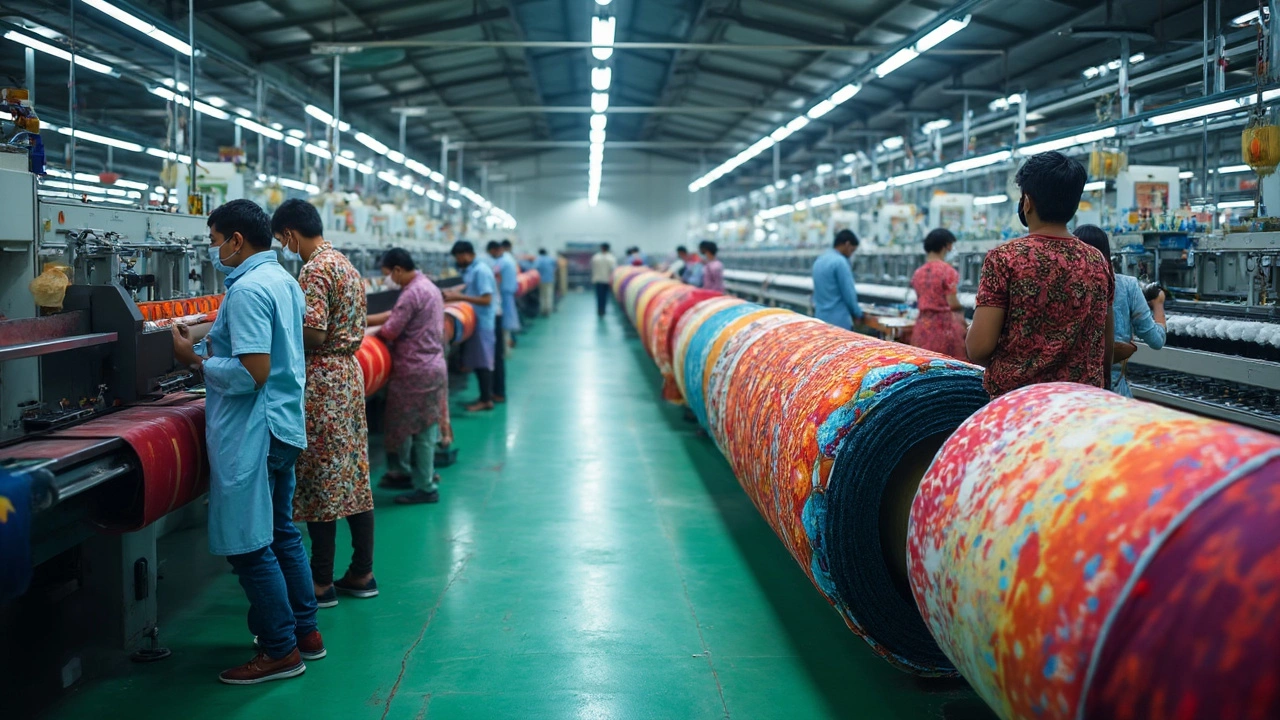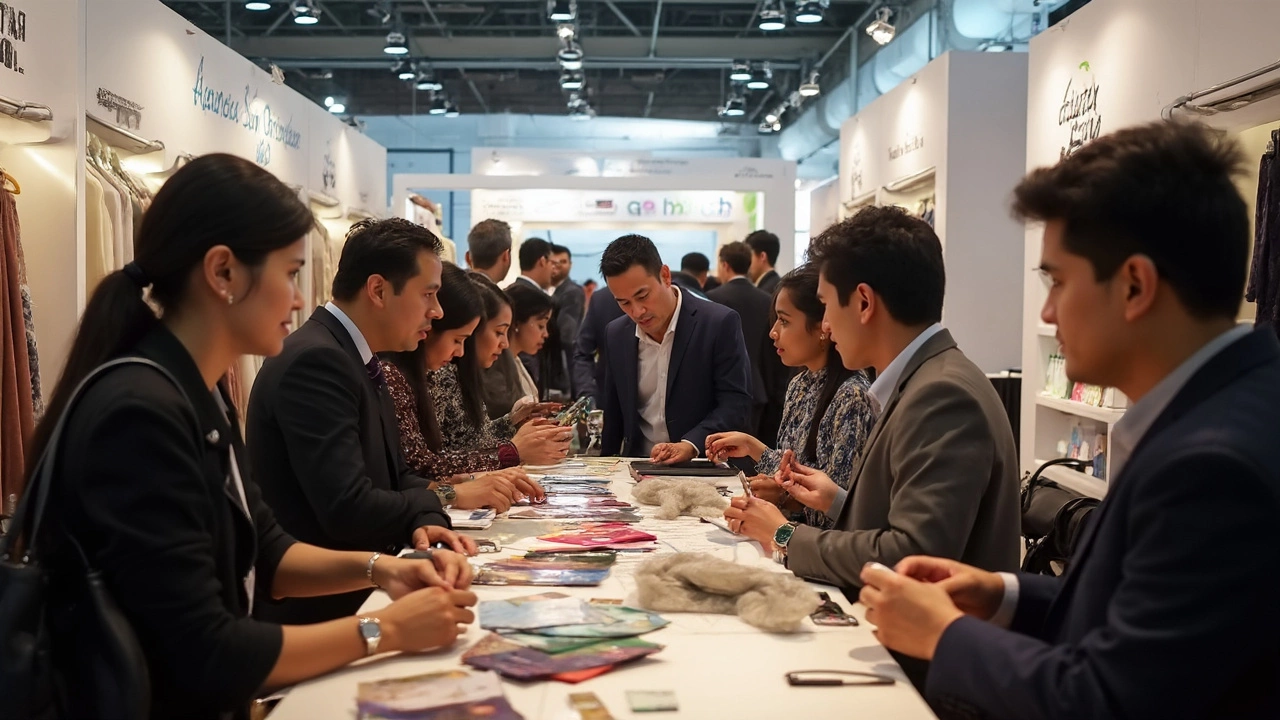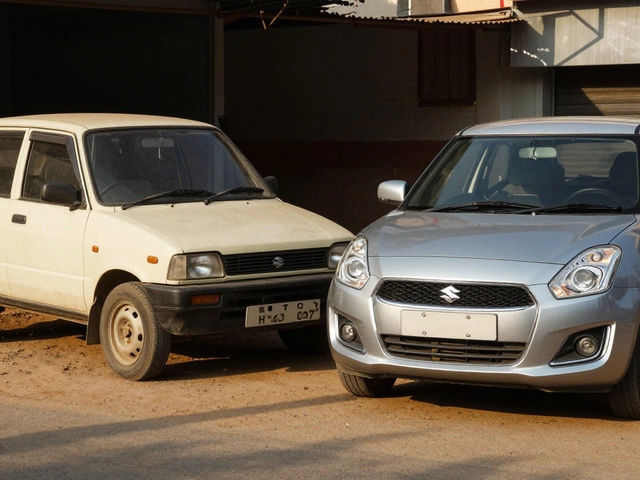Largest Synthetic Textile Manufacturer in India: Who Tops the List?

Ever wondered who actually sits at the top when it comes to synthetic textiles in India? If you ask anyone in the business, there's usually one name that jumps out right away. India's synthetic textile market is massive—not just in size, but also in the crazy variety of products. From the polyester in your sports tee to the nylon in that raincoat that’s saved me and my son Rohan a few times during monsoon school runs, synthetic textiles are everywhere.
But who dominates this massive scene? Out of hundreds of players—some family-run, some with the scale of small countries—one company just keeps showing up in every major conversation, trade report, and buyer’s list. If you’re trying to break into this market or just looking to source the best quality at volume, you need to know who you’re dealing with. And that info isn’t just for the big fish. Even small start-ups, designers, or anyone wanting to sell clothing or home furnishings should pay attention. Picking the right manufacturer at the top of the heap could change your margins, your credibility, and maybe even your whole business.
- Quick Glance at India's Synthetic Textile Scene
- The Giant: Who Really Leads?
- What Makes the Leader Stand Out?
- Why It Matters for Buyers and Suppliers
- Tips for Partnering with Big Textile Manufacturers
Quick Glance at India's Synthetic Textile Scene
The synthetic textile industry in India isn’t just big—it’s a giant, turning out products for both local use and export. The game-changer was the surge in polyester, nylon, and acrylic fibers back in the 1980s and 90s, right after the country opened up its markets. By 2025, India is easily one of the top three global producers for synthetic fibers, accounting for about 7% of global synthetic fiber manufacturing capacity, according to the Synthetic & Rayon Textiles Export Promotion Council.
What’s special here is the massive scale. You’ll find everything from yarn to finished garments, carpets, and even automotive fabrics. The sector directly employs over 10 million people, which kind of blows my mind every time I look at the numbers. The main production hubs are in Gujarat and Maharashtra—if you look at a map, these states are like the heart and lungs of textile production here.
And it’s not all just about volume. India’s synthetic textiles keep finding their way into major sports apparel brands, high-performance outdoor gear, and home furnishing globally. My own kid’s school uniform probably traveled through three or four Indian mills before we got our hands on it.
Key products include:
- Polyester yarns and fabrics (used in activewear and everyday clothing)
- Nylon fibers (for outerwear, rain gear, and luggage)
- Acrylic blends (think sweaters and winter wear)
- Value-added textiles like technical fabrics for industrial, medical, and automotive use
If you’re entering the market or planning partnerships, knowing the key players here isn’t just helpful—it’s practically a survival tip. The synthetic textile manufacturer India scene is dominated by a few giants, but there’s real opportunity for smart, nimble brands to slot in alongside them.
The Giant: Who Really Leads?
If you're digging into India's synthetic textile industry, one name towers over all the rest—Reliance Industries. They've dominated the scene for years and, honestly, it doesn’t look like that’ll change soon. When folks talk about scale, they aren’t kidding. Reliance Industries’ petrochemicals and polyester businesses give them a solid grip on every step, from raw material to finish.
Here’s a cool fact: Reliance is the world's largest producer of polyester fiber and yarn. This isn’t just a local record—they actually beat out global giants based in China and the US. Just last year, their polyester production crossed 2.5 million metric tonnes. That’s more than enough fiber to wrap around the Earth—literally.
To drive the point home, check out this quick breakdown:
| Company | Annual Synthetic Fiber Output (MT) | Main Products |
|---|---|---|
| Reliance Industries | 2.5 million+ | Polyester fiber, yarn, PET chips |
| Grasim Industries (Aditya Birla) | 1.6 million | Viscose staple fiber, filament yarn |
| SRF Limited | 900,000 | Nylon, polyester, technical textiles |
Reliance doesn’t just focus on quantity. They pour big money into R&D and have a factory setup that’s high-tech and super efficient. If you’re looking for polyester, they’ll likely deliver it faster and at a better scale than anyone else. Plus, since they control raw material (thanks to their petroleum business), they’re usually less impacted by price swings. That means better deals for buyers and less stress over global oil prices. No surprise that Reliance is the first stop for anyone searching for synthetic textiles in India.

What Makes the Leader Stand Out?
The talk of the town in India's synthetic textile market is Reliance Industries. They’re not just big—they’re on a different level compared to everyone else. You’ll spot their fabrics everywhere, from mass-market shirts to luxury hotel curtains and even sportswear brands. Why do they crush the competition? Let’s break it down.
First, numbers say it all. Reliance Industries rolls out over 2.5 million tonnes of polyester each year, making them the world’s largest producer, not just India’s. To put that in perspective, their share is several times larger than the next biggest Indian rivals. The scale lets them offer better prices and reliable supplies. For anyone making or buying at high volumes, this is a total game-changer. Check out these stats:
| Company | Polyester Output (tonnes/year) | Market Share (%) |
|---|---|---|
| Reliance Industries | 2,500,000+ | 55 |
| Grasim Industries | 750,000 | 13 |
| Garden Silk Mills | 650,000 | 12 |
Scale alone isn’t the only card they play. Reliance has its own raw material, energy, and production lines, so they don’t depend on outsiders. That’s a real advantage, especially when global supply chains get messy (which, as I found out when ordering fabric for my son’s school project last year, can happen more than you’d think).
They’re also big on sustainability and tech upgrades. Think recycled PET yarns, low-water processes, and even using AI for quality control. They partner up with fresher brands and fashion techs, so not only are their products everywhere, but they also set trends for the rest of the industry.
If you care about compliance—which you should, because dodgy sourcing can kill your business—Reliance’s certifications like OEKO-TEX and ISO make life easier. Nobody wants to explain toxic dyes in their garment stockroom, trust me.
To sum up, synthetic textile manufacturer India searches always circle back to Reliance because they lead in scale, control, price, quality, and staying ahead in tech and green practices. If you’re looking for reliability baked with constant upgrades, that’s what makes them the main act in India’s synthetic textile scene.
Why It Matters for Buyers and Suppliers
If you’re dealing with synthetic textiles in India—whether you’re a buyer hunting for big contracts or a supplier looking to team up—you can’t ignore the role of the synthetic textile manufacturer India giant. Relying on the top manufacturer, like Reliance Industries (which made over 2.9 million tons of polyester yarn and fiber last year), makes a real difference in terms of price, scale, and consistency.
Here’s what’s at stake for buyers:
- Bulk availability: The big players can handle huge orders, sometimes quicker than smaller suppliers. That’s crucial for meeting retail deadlines or sudden spikes in demand.
- Consistent quality: Leading manufacturers invest more in technology and quality checks. If your brand reputation relies on fabric that lasts, you want that reliability.
- Negotiation power: With large volume comes better rates. You can lock in long-term pricing or get discounts that smaller mills just can’t offer.
For suppliers:
- Steady business: Being a vendor to the biggest manufacturer means regular, repeat orders that can keep your own production lines moving year-round.
- Exposure to global markets: The top manufacturer exports massive quantities, and if you’re part of their supply chain, your products could travel far beyond India.
- Upgrading standards: Working with a big manufacturer usually forces improvements. They set the bar higher for things like sustainability certificates and international testing.
Check out some numbers showing the industry’s scale (2024 figures):
| Company | Annual Synthetic Output (million tons) |
Major Products | Global Market Reach |
|---|---|---|---|
| Reliance Industries | 2.9 | Polyester, Nylon | 70+ countries |
| Grasim Industries | 0.7 | Viscose, Polyester | 40+ countries |
| Raymond | 0.2 | Polyester | 15+ countries |
Another thing—if sustainability is one of your goals, you’ll find that the bigger manufacturers are increasingly offering recycled yarns, PET-based fabrics, and zero-discharge processing. That helps you meet those eco-benchmarks that keep popping up in export markets like Europe and the US.
So, if you want access to bulk fabric, stable prices, and world-class quality (plus a green tick mark for sustainability), going with the top synthetic textile manufacturers is the smart move—whether you’re a buyer or a supplier.

Tips for Partnering with Big Textile Manufacturers
If you’re set on working with a major player like Reliance Industries—the synthetic textile manufacturer India knows best—there’s a bit more to it than just picking up the phone. These companies work on a scale most small businesses can hardly imagine, but they do welcome newer buyers or brands if you approach things the right way.
First off, get your quantities and requirements crystal clear. Big manufacturers love bulk and consistency—they’re not too keen on tiny, confusing orders or last-minute changes. Put all your specs down on paper: fabric type, weave, finish, colors, even expected lead times. It helps avoid confusion and builds trust with their backend teams.
When it comes to price, don’t expect massive discounts right out of the gate. These brands usually have tight price lists and better deals for repeat or long-term buyers. But don’t be shy about asking for sample runs or test lots. Many big companies—like Reliance’s R|Elan or Grasim, for example—offer small sample orders if you show you’re serious and have a plan to scale up.
Communication is key. Make sure you have a contact on the inside—just some sales@company email isn’t going to cut it. Try to get your own relationship manager or local rep if you’re dealing from outside India. These folks can cut through the noise and even warn you about production slowdowns during festivals, factory upgrades, or the wild and unpredictable Indian monsoons.
Another big tip: always talk about sustainability and certifications. The best synthetic manufacturers in India, especially the giants, now offer recycled polyester, water-saving processes, and have all the major certifications—think OEKO-TEX, GRS, and ISO standards. Asking for these isn’t just good for the planet; it shows suppliers you know the current trends and you mean business.
- Define every detail of your order from the start (fabric style, quantity, color, delivery needs).
- Don’t be afraid to negotiate, but keep it real—show them your long-term plan.
- Ask for certifications and sustainability options upfront.
- Build rapport with a dedicated rep, not just the sales desk.
- Stay on top of timelines—big factories sometimes have long lead times, especially during festival seasons.
- Document everything—emails, commitments, even phone calls. Keeps everyone honest.
Partnering with the big names can give you better prices, reliable delivery, and instant credibility with buyers. Play it smart, and you’ll get all the upsides of the giant’s reach, quality, and efficiency.





